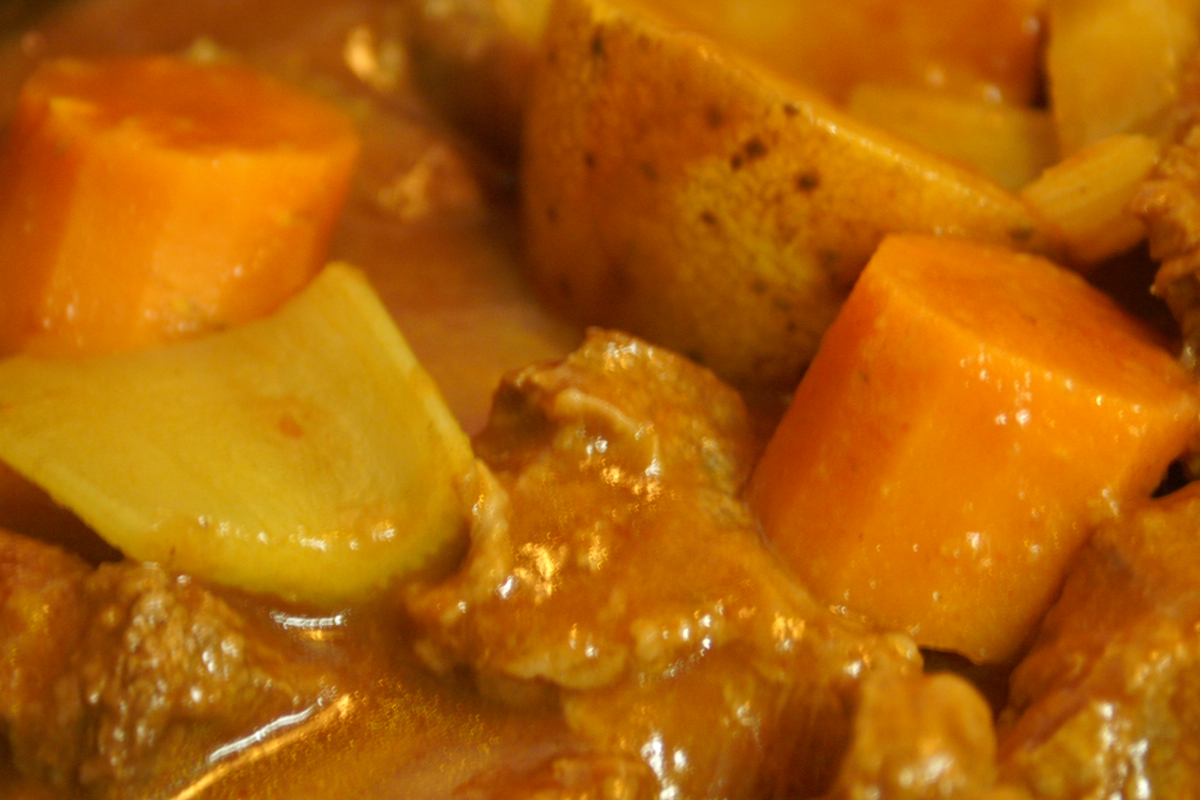Roux /rōō/ n. (pl. same) Cooking a mixture of fat (esp. butter) and flour used in making sauces. [from Fr. (buerre) roux ‘browned (butter).’]
Roux and me. Me and roux. We used to be pro forma facebook friends. Now we spend hours together every week. Trotter’s Café and Bakery fomented our close relationship, demanding up to two roux soups a day. Dick Trotter gave me a quick training on the basics of roux-making, but, unsatisfied with vague phrases like “consistency of wet cement” and “cook the starch out,” I turned to my classic reference materials: Charley and Weaver’s Foods: A Scientific Approach (3rd ed., ©1998) and Rombauer and Becker’s Joy of Cooking, ©1975.
Roux's goal at Trotter’s is to be a thickening agent for some of its soups: Beef Stew, Curry Cauliflower, Beer Cheese Soup, etc. The starch in flour does the heavy lifting, absorbing water and swelling proportionately. So why the butter?
According to Charley and Weaver, “When starch is used as a thickening agent, a uniformly thickened liquid without lumps is desired.” Important to a thickened yet lumpless liquid is separation of starch granules from one another. In roux, flour particles are separated with a coating of fat.
Roux must be equal parts flour and butter (by weight!) so that fat coats the flour particles evenly. The result is neither pourable (the dreaded slack roux) nor crumbly. That explains the “wet cement” consistency. And yes, the butter needs to be melted to coat the particles, but do I really have to cook it over low heat for ten more minutes, stirring constantly?
Absolutely, Rombauer and Becker declare, studding a relevant passage with arrows to emphasize the seriousness of the situation.
►Unless a roux is cooked long enough to dispel the raw taste of flour, this unpleasant flavor will dominate the strongest stocks and seasonings. And unless the flour and butter are stirred to distribute the heat and to allow the starch granules to swell evenly, they will later fail to absorb the liquid, and the sauce will be thin. ►This heated blending period is most important. Using excessive heat to try hurrying it will burn the flour, giving it a bitter taste; and it will shrink the starch, making it incapable of continuing to swell.
Forget lumps – the whole batch of Beef Stew could end up soupy as Beef Bourguignon and as bitter as tahini! Thank goodness I have not had disasters of that scale.
 |
| AlbertCahalan's rendering of Beef Stew |
Interesting, Hannah! I never knew
ReplyDelete